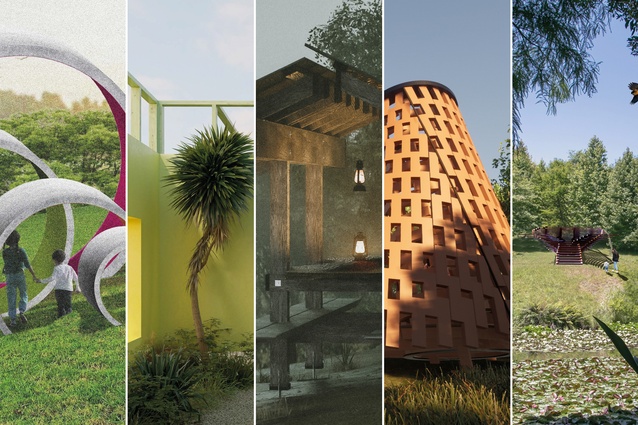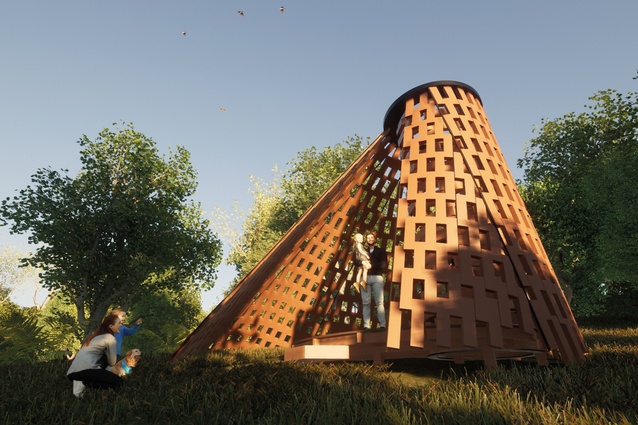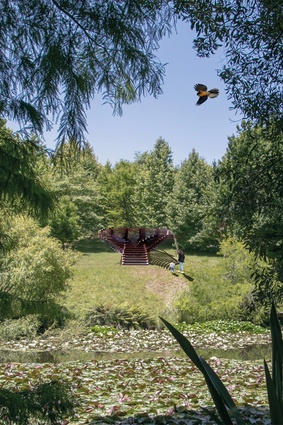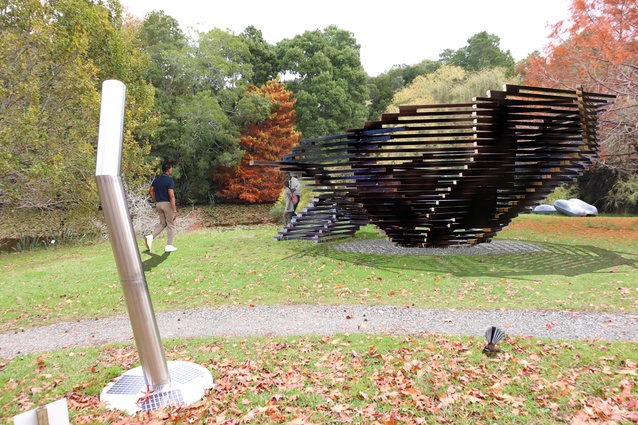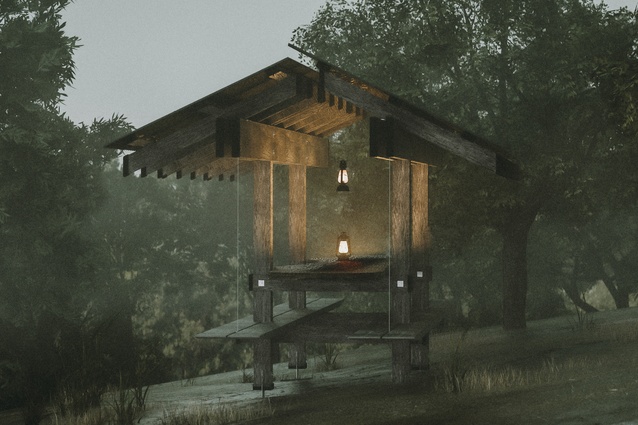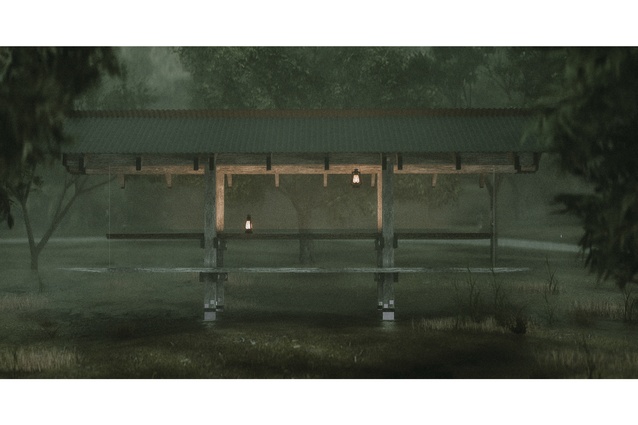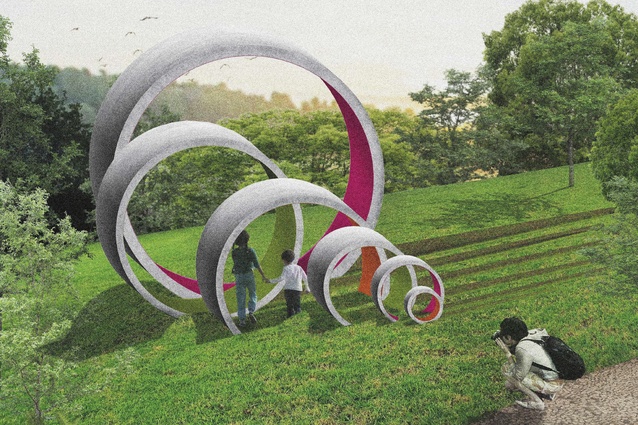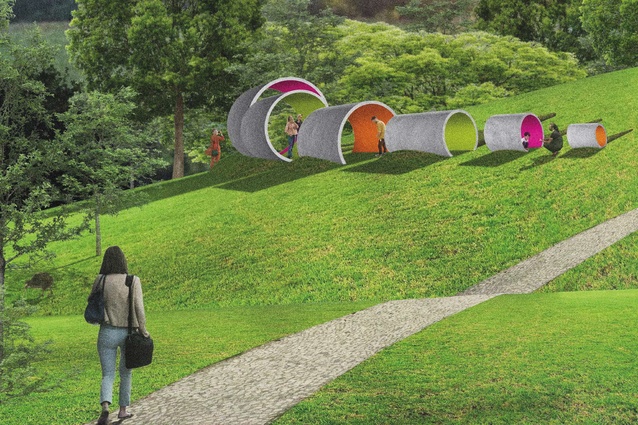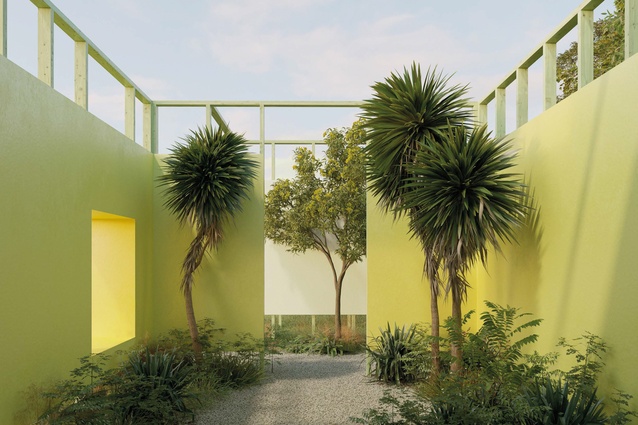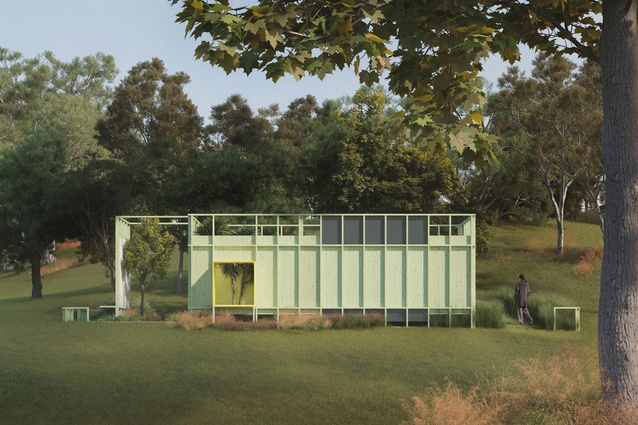Finalists announced: Brick Bay Folly 2021
With sustainability, the pandemic and climate and biodiversity crises front of mind, this year’s Brick Bay Folly entries tackled issues beyond those of simply translating whimsical computer renders into constructed reality. Amanda Harkness takes a closer look.
This year, perhaps more than others, the folly finalists appeared to be driven by more-searching imperatives than has previously been the case, with four offering different takes on sustainability and one drawing on our emotional responses to colour.
“As always, the entries sought to navigate the area between sculpture and architecture, and, in doing so, highlighted some underlying differences between the two disciplines and some contemporary architectural issues,” says Brick Bay Folly chair, architect Pip Cheshire. “Perhaps the foremost consideration is the extent to which entries offered some spatial experience: something that transcended visual inspection and provoked a consideration of the folly’s making and its place in the wider Brick Bay landscape.”
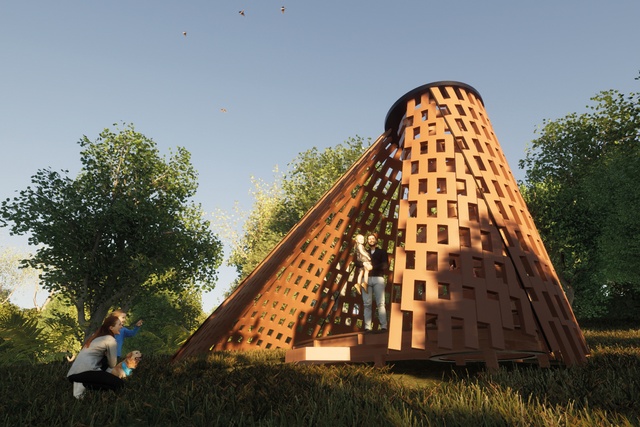
In Between the Rings of the Kauri is a spatially enticing tent-like form, which draws a link between the kauri forest, which once stretched across Brick Bay, and the brickworks that were built on the site in the 1840s. With the composition of a kauri tree, the timber structure is stacked in a brick-like pattern, with a cylinder in the centre signifying the tree trunk and angled, vertical stacking wrapping around the trunk offering shelter in the form of thick roots. From inside the ancient tree, visitors will experience the history, light and energy of Brick Bay.
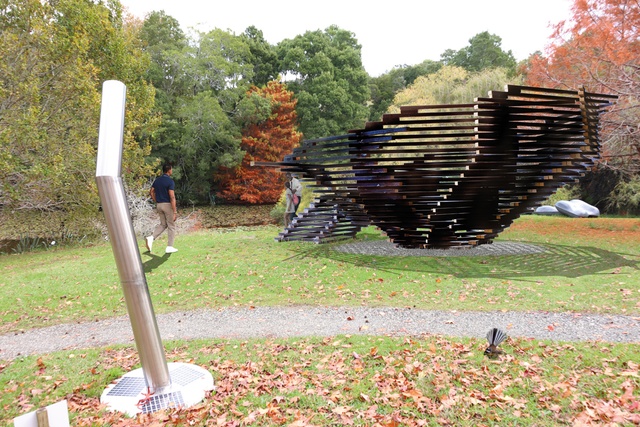
Demonstrating a strong regard for sustainability and an alluring fragility of design, The Nest reuses the timber studs of a former folly, the Wood Pavilion, and imagines its next stage of life as a pīwakawaka (fantail) nest. The patterns created by the geometry reflect the tail spread of the bird, a species that predominantly inhabits the site, and the stacking of the timber distributes weight evenly around the design, providing patterns, voids and light entrance points. The base square seamlessly transitions into a pentagon, allowing the nest to expand outwards, while the top-level studs complete the open enclosure by vertically stacking the last levels for intimacy, safety and privacy within. A simple set of stairs guides visitors into the nest, much as a pīwakawaka would enter the nest from the air.
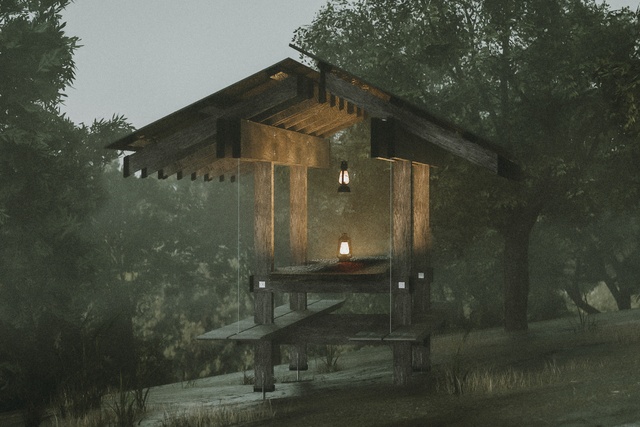
Caretaker, by its very name, questions the inherent notion that the folly must be temporary, with the project team proposing to extend the design beyond the life of the folly time span and including a relocation plan in its submission. The elegant, gabled hut structure, built around a singular slab of reclaimed rimu, challenges the idea of permanence; it is supported by only four points and touches the ground as lightly as possible. A macrocarpa structure topped with a corrugated roof protects the rimu table and recycled kerosine lanterns suspended by cables illuminate the sophisticated structure by night.
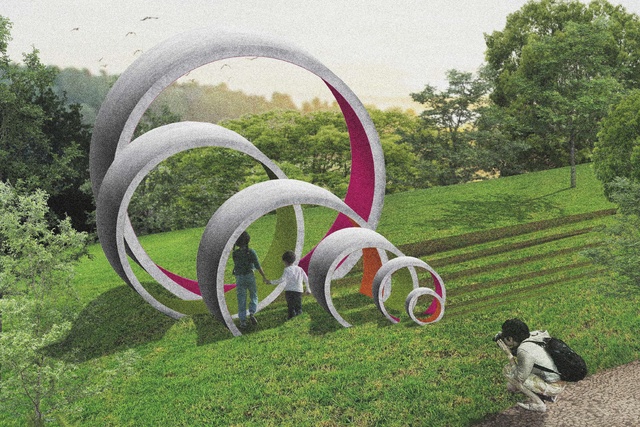
Addressing a topical social issue, Shifting Cultivation seeks to unearth and expose the process that is required to develop previously fertile and arable land into sites suitable for cheap mass housing. Concrete pipes reference the endless kilometres of stormwater and blackwater infrastructure sunk into the ground in the first stage of land-use conversion, while also representing a scar in the hillside as the man-made structures plough through the land. The spacing and positioning of the pipes replicates and advocates for increased density as the housing moves closer to the larger centres.
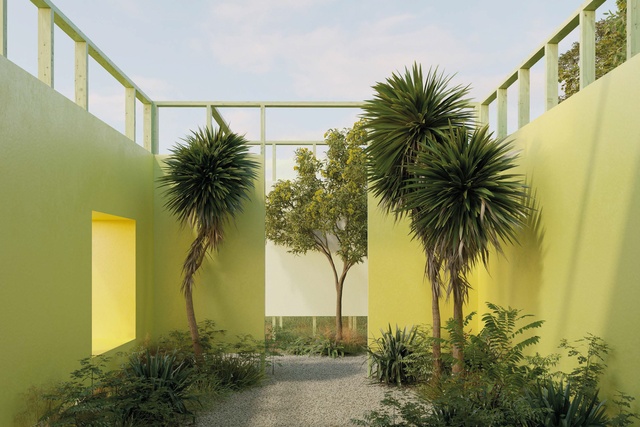
Inspired by both a BRANZ (Building Research Association of New Zealand) diagram and Kassia St Clair’s The Secret Lives of Colour, Four Rooms in Full Colour is a captivating concept which draws a link between colour and emotion. It invites visitors inside an interior that is effectively a beautifully landscaped exterior. A vibrant garden grows inside, spilling into deep, exaggerated timber cavities, where each room is soaked in colour from a leaf-inspired palette. Lush, native planting is, at times, random and unruly, as visitors transition through the green Yard, to the red Womb and, then, the yellow Garden before exiting via the white Back Door.
This year’s judges are Pip Cheshire from Cheshire Architects, Philip Haycock from Naylor Love, Peter Boardman from Structure Design, Yusef Patel from Unitec, Karen Warman from Resene (represented by Karmen Dumper), Chris Barton from Architecture NZ, Richard and Anna Didsbury from Brick Bay, and Raymond Yoo from last year’s winning Folly team, Genealogy of the Pacific.
The winner of the 2021 Brick Bay Folly will be unveiled in March 2022.
Brick Bay Folly is sponsored by Resene, Naylor Love, Cheshire Architects, Unitec, Structure Design, Sam Hartnett Photography and Architecture NZ/ArchitectureNow.

